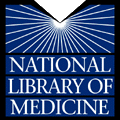

MEDLINE
Logs 10 Millionth Journal Citation
MEDLINE, the world's largest medical database, covers the medical literature from 1966 to the present. When it began, it covered 239 journals, and the National Library of Medicine News bragged that it had "the capability of supporting up to 25 simultaneous users."
On July 10 of this year, MEDLINE attained a major milestone when the 10 millionth journal citation was added to the database. Today, MEDLINE lists references from about 4,300 of the world's most respected medical and scientific journals. Full text can be accessed for recent editions of several hundred of those publications. And the number of searches? More than half a million each day.
"The occasion of the 10 millionth record in MEDLINE gives us an opportunity to step back and reflect on what a staggering amount of work this represents over the decades," commented NLM director Dr. Donald Lindberg. "We owe thanks to a corps of dedicated NLM staff who competently order and receive the journals, create the Medical Subject Headings, index the articles, enter the data into MEDLINE and maintain the database."
In the early days of MEDLINE, NLM staff worked with typewriters and data forms to input citations into a punched card system. Today, computers have streamlined operations dramatically. Input is now mostly done by scanning articles, or by importing electronic data directly from publishers.
And what was the 10 millionth citation in MEDLINE? The article, "Particulates from PTFE degradation in terrestrial and microgravity," appearing in Aviation, Space and Environmental Medicine, 1999 May;70(5):505-10. The article was indexed by an indexer working on an NLM contract using the interactive online indexing system from her home — another example of how things have changed since MEDLINE began. As a result of NLM's cooperation with NASA, another recent development, this citation also appears in SPACELINE, another of the library's family of databases, since it provides information on the possible breakdown of polytetrafluoroethylene-coated wires in spacecraft.
Originally, MEDLINE citations were updated once a month. Today, MEDLINE is updated weekly and the bibliographic information for not-yet-indexed citations is entered daily into PubMed, NLM's retrieval engine for searching MEDLINE.
With the launch of free MEDLINE on the World Wide Web in June 1997, usage has skyrocketed. In the "MEDLINE for a fee" days, the database reached a high point of 7 million searches annually. For "free MEDLINE," the figure has already reached 16 million searches per month, a number that continues to grow.
"Now that so much more medical information is freely available to the public via the Internet and the Web," noted Lindberg, "the MEDLINE core of information takes on new importance and even greater relevance to the health of the public than when the system began with record number one."
This story appeared in the August 7, 1999 issue of The NIH Record.